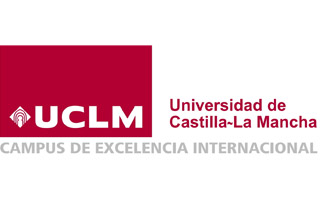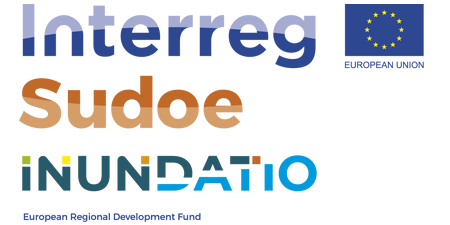HERITAGE AND SOCIAL RESILIENCE
Social resilience studies how communities face adversity. Digital sovereignty and resilience are vital for business innovation and require secure digital infrastructures, using digital technologies as key tools for adaptation and innovation.

Social resilience is a dynamic field of research that examines the ability of individuals, communities, and societies to cope with and recover from various challenges and adversities. Digital sovereignty and digital resilience are indispensable requirements for innovative and self-determined action by companies.
Therefore, it is necessary to create a secure and resilient digital infrastructure by increasing the use of digital technologies and developing digital networks.
Social change, with an increasingly aging population and high population density in metropolitan areas, as well as the consequences of climate change with events such as floods or heatwaves, present new, growing, and unpredictable challenges for the preservation and protection of heritage. To make it more resilient, it is of great importance to preserve this heritage and develop it with a future-oriented approach. Digital technologies are poised to play a leading role in these actions.
CLIENTS IN HERITAGE AND SOCIAL RESILIENCE








TECHNOLOGIES APPLIED TO HERITAGE AND SOCIAL RESILIENCE
Heritage and Smart Tourism
Smart tourism is defined as the dynamic combination of human experiences with smart technologies. It is closely linked to the development of smart cities and goes hand in hand with improvements in technologies such as artificial intelligence, IoT, big data, and 5G.
The goal of smart tourism is to improve resource management efficiency, maximize competitiveness, and increase sustainability through the use of innovative technologies. As a result, more and more destinations are joining this modernization of their operations.
Artificial intelligence has numerous applications in the tourism sector, both from the consumer’s and the entrepreneur’s perspectives. For consumers, AI helps them quickly find the most important information, gives them more mobility, improves decision-making, and offers a better tourism experience. For entrepreneurs, AI helps manage resources, especially in advertising and productivity, and creates a more sustainable model.
As 5G networks develop, new applications will emerge based on faster communication between devices and possibilities with virtual reality. When applied to tourism, we refer to solutions that travel companies or cities can use to attract visitors through a more engaging experience. Changes in this sector will focus on greater personalization of services, better access to information and content, high-quality entertainment, and optimized operations.
Prevention and emergency assistance.
Interactive video games
In the wake of the expansion of video games as a leisure activity for the general public, many users considered that they could also serve an educational purpose. Thus emerged the concept of “serious games,” meaning games designed to impart knowledge. Initially, serious games were modifications of fun versions that had the potential to provide learning experiences.
The term “serious” refers to those video games that are primarily used in the educational, scientific, healthcare, urban planning, engineering sectors, etc. They are a powerful tool for companies that employ gamification elements to create a positive and educational experience about something that, at first glance, is not.
The main goal is to achieve the objective set by the company or public organization in an enjoyable manner, such as a welcome manual, learning a specific protocol of action, or simply conveying brand values and reinforcing branding.
OUR PROYECTS
PEIVPRO – Virtual Reality Training Modules
Facilitate the integration of students into the professional world by confronting them with real professional situations through the use of virtual immersion.
Duration: 2023 - 2025
iPROHAB – AI-Driven Supply Procedd Optimiz
Research into the use of RPA systems for reading and downloading information, as well as the use of Blockchain technology, to provide the information obtained with veracity and immutability. Through the use of artificial intelligence, companies in the value chain will be redirected to the optimal profile.
Duration: 8 months (2022-2023)
VIRTUALIZA – Virtual Training Platform for SME´s
Virtualiza arose from the need to offer more personalised training to users with certain dependencies or functional limitations, such as the elderly and people in vulnerable situations in general
Duration: 2021-2022
ARADOS – Collaborative Platform for Rural Areas
ARADOS - Collaborative Platform for Friendly and Supportive Rural Areas - European Project The main objective of the ARADOS: Collaborative Platform for Friendly and Supportive Rural Areas project is to develop a new pilot system that allows the integration...
Al4Labour – AI in Workforce Restructuring: Future Job Skills
Technologies based on data processing are changing not only manufacturing standards, but also people's daily lives. This can ensure concentration on more strategic or more analytical work.
Duration: 48 months
INUNDATIO – Flood Risk Modeling with AI and BigData.
INUNDATIO ofrece un modelo de sistema de gestión de avenidas súbitas (flash floods) en cabeceras de cuenca basado en su caracterización hidromorfológica, la toma contínua de datos hidrometeorológicos (lluvia + caudal), la comparación con datos históricos, la simulación de escenarios de riesgo y el análisis de la vulnerabilidad para las vidas humanas y los elementos materiales.
Duración: Octubre 2019 - Abril 2022
AIMARS – AI Event Security System
AIMARS aims to demonstrate Europe's First Integrated Security and Surveillance Technology Solution for large gatherings: to provide useful and real-time information to Public and Private Security Forces and Corps, to prevent attacks, crowds, riots and other incidents.
Duration: 2018 - 2022
eConfidence, serious game
eConfidence, project to change behaviour in children through technology EUROPEAN PROJECT File: 732420 ITCL leads the consortium of the European project eConfidence, which seeks to change behaviour in children through technology. Serious games have become a popular...
SECUSIM – Training System for the Use Fire
The Fire Support Training Simulator SECUSIM provides an innovative solution for training in indirect fire support systems. This advanced system leverages virtual reality and 3D simulations to improve training effectiveness and reduce costs. A training system for...
Serious Game. My Shop 2.0
COMPANY PROJECT ITCL has developed for the Junta de Castilla y León a Serious Game so that SMEs can understand the value of incorporating ICTs in their companies. The Serious Game simulates a real shop which includes different ICTs that help to improve sales and...










